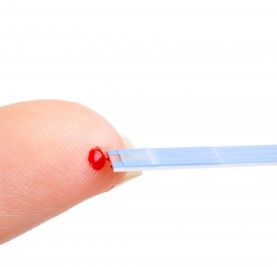How The Hemoglobin A1C Test is
Used To Diagnose Pre Diabetes

The hemoglobin A1C test, or the glycosylated hemoglobin test, measures the three-month average of blood sugar that has attached the hemoglobin (proteins found in red blood cells). Some people refer to this test as the hemoglobin A1C, glycolhemoglobin test, or HbA1c.
Though the medical community hasn’t been as quick in the past to embrace the A1C tests for diagnosing pre diabetes, it is increasingly popular with consumers since it doesn’t require fasting and can be administered at home, which is more convenient and saves money.
A Closer Look: The A1C Test
Red blood cells are constantly replenishing themselves in the body.
The average life cycle, however, is about three months. The A1C test measures the glucose (or sugar) that’s attached to the hemoglobin (proteins) in the red blood cells. It’s a test of averages.
|
Ideally, your A1C level -- the amount of sugar attached to the proteins in your red blood cells -- is lower than 5.7 percent. Pre diabetes is diagnosed with results between 5.7 and 6.4 percent. Results of 6.5 or higher lead to a Type 2 diabetes diagnosis, though a second measurement is required to confirm the diagnosis unless there are clear symptoms of diabetes present. |
There are A1C test kits you can administer at home and receive results within five minutes of taking the test. Keep in mind, however, that you will need additional confirmation without clear symptoms of diabetes. Many people without insurance or with high deductible insurance plans prefer this option for testing over medically supervised tests. This is relatively new as a diagnostic test for diabetes and pre diabetes. It was only recommended for this purpose within the last few years. However, many people prefer this as a test because it doesn’t require fasting prior to taking it and can be done at any time of the day. |
Related Articles:
Return from The Hemoglobin A1C Test to the Pre Diabetes Home Page




